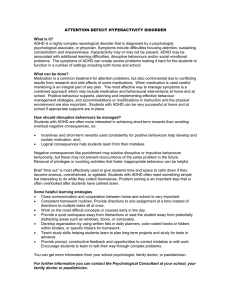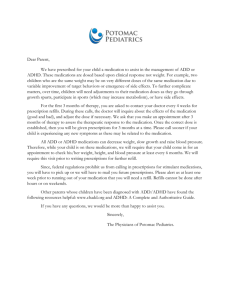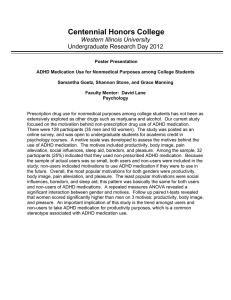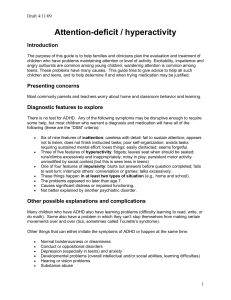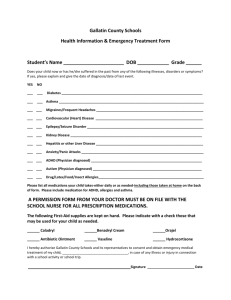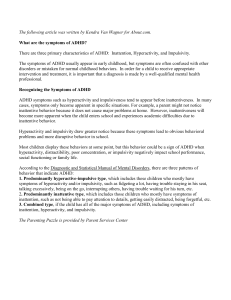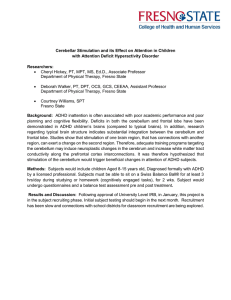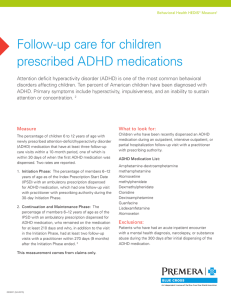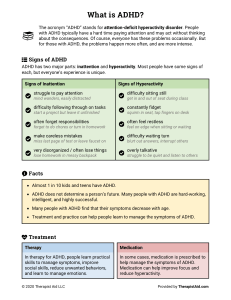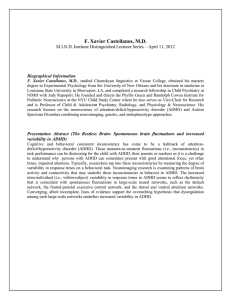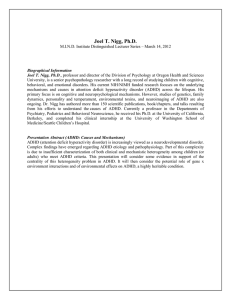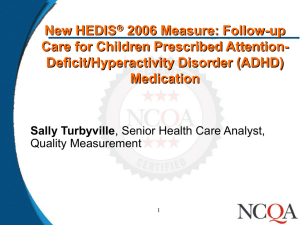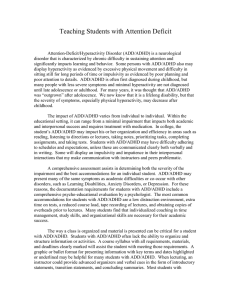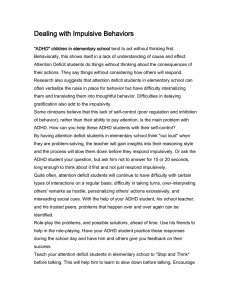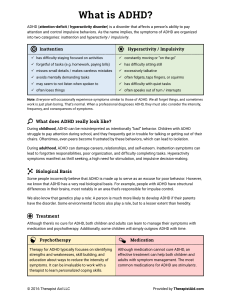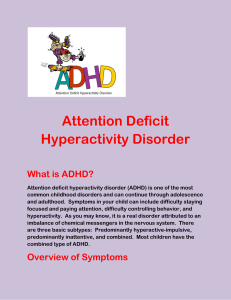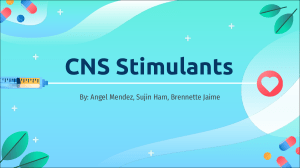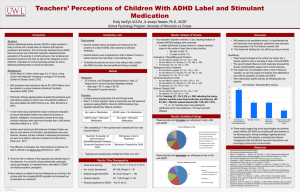ATTENTION DEFICIT HYPERACTIVITY DISORDER (ADHD) Symptoms 1. Short attention span
advertisement
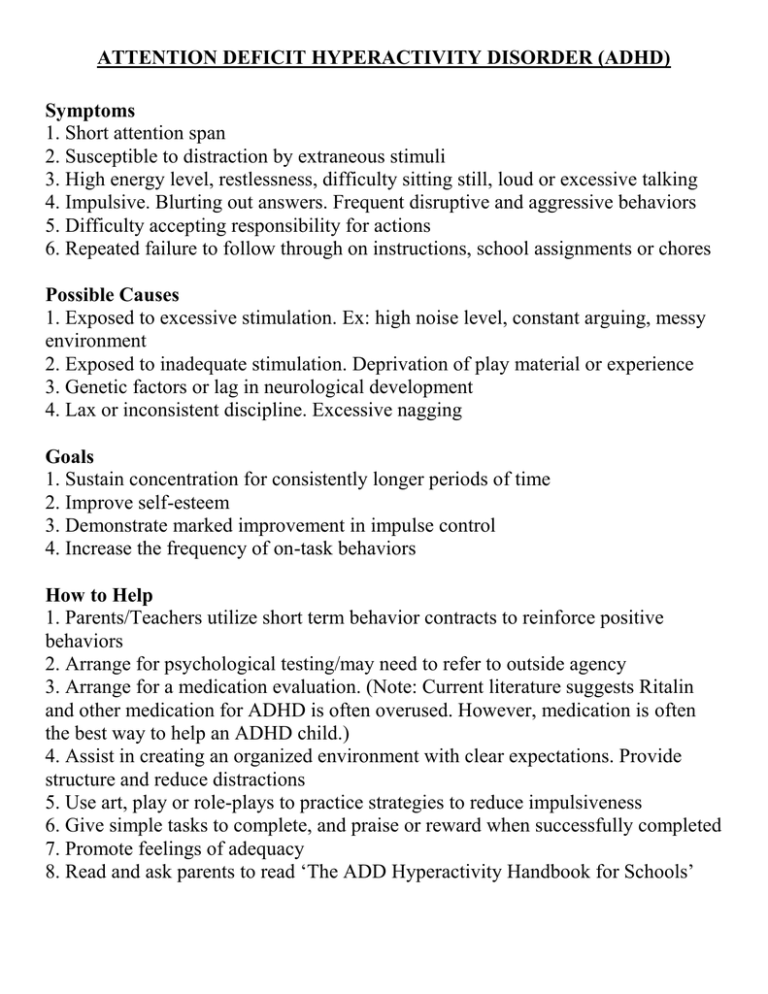
ATTENTION DEFICIT HYPERACTIVITY DISORDER (ADHD) Symptoms 1. Short attention span 2. Susceptible to distraction by extraneous stimuli 3. High energy level, restlessness, difficulty sitting still, loud or excessive talking 4. Impulsive. Blurting out answers. Frequent disruptive and aggressive behaviors 5. Difficulty accepting responsibility for actions 6. Repeated failure to follow through on instructions, school assignments or chores Possible Causes 1. Exposed to excessive stimulation. Ex: high noise level, constant arguing, messy environment 2. Exposed to inadequate stimulation. Deprivation of play material or experience 3. Genetic factors or lag in neurological development 4. Lax or inconsistent discipline. Excessive nagging Goals 1. Sustain concentration for consistently longer periods of time 2. Improve self-esteem 3. Demonstrate marked improvement in impulse control 4. Increase the frequency of on-task behaviors How to Help 1. Parents/Teachers utilize short term behavior contracts to reinforce positive behaviors 2. Arrange for psychological testing/may need to refer to outside agency 3. Arrange for a medication evaluation. (Note: Current literature suggests Ritalin and other medication for ADHD is often overused. However, medication is often the best way to help an ADHD child.) 4. Assist in creating an organized environment with clear expectations. Provide structure and reduce distractions 5. Use art, play or role-plays to practice strategies to reduce impulsiveness 6. Give simple tasks to complete, and praise or reward when successfully completed 7. Promote feelings of adequacy 8. Read and ask parents to read ‘The ADD Hyperactivity Handbook for Schools’ 9. Assist parents help the student learn to delay gratification for longer term goals 10. Encourage participation in extracurricular activities that provide a physical outlet and improve her/his social skills


